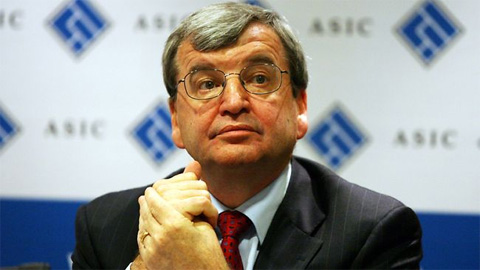
By Damon Kitney
A NUMBER of top 200 listed companies are failing to properly report their profit results in an effort to hide “bad news” from investors.
This come in a landmark survey by the corporate regulator. The Australian Securities & Investments Commission has for the first time reviewed the quality of the disclosures contained in the “Operating and Financial Review” section of the annual reports of 50 of the top 200 listed companies with June 30 balance dates.
ASIC found that a number of companies had disregarded warnings by the regulator in the lead-up to the August annual profit reporting season not to report misleading profit figures that focused on more favourable-looking numbers.
“ASIC’s reviews highlighted a number of areas where entities could have paid greater attention, including presenting information on the key components of results and a meaningful analysis of the underlying drivers of the statutory profit,” ASIC commissioner Michael Dwyer said.
The findings confirm KPMG research released earlier this year that found 84 per cent of the top 100 companies used a measure other than statutory profit in their press releases.
The use of statutory profits versus underlying or alternative profits — which exclude big asset writedowns and one-off items such as derivative revaluations, fair value gains and losses on investment properties and movements in defined benefit superannuation schemes — has been the subject of fierce debate between directors and ASIC over the past year.
Reporting statutory profits in accordance with accounting standards allows readers of financial reports to make comparisons between companies and over time.
Legislation and accounting standards restrict the use of alternative financial statements and profit measures in financial reports to prevent companies “window dressing” their accounts.
There is greater opportunity for alternative profits to be window-dressed because the numbers are not signed off by auditors.
ASIC has previously warned companies that the disclosure of alternative profit measures in profit announcements and other documents should not be misleading and should not be given undue prominence compared to the statutory profit.
It has called for a reconciliation of any alternative profit to the statutory profit, with explanations of adjustments.
It has also demanded positive and negative adjustments to be included and said they should be consistent from period to period.
Directors can face criminal penalties for making false or misleading statements about company profits.
But in its review, ASIC found that alternative profits disclosed were not determined on a consistent basis between entities and some entities changed the basis of calculation from the prior year.
It found that almost half of the 31 companies that disclosed alternative profits did not provide a reconciliation between their alternative profit figure and statutory profit.
ASIC said such a disclosure would have helped readers of the annual report to understand the basis of calculation.
The regulator also found that 21 entities gave the alternative profit figure more prominence than the statutory profit.
Eight companies did not include positive and negative adjustments to their statutory profit in calculating their alternative profit figure.
“A number of entities appeared to focus on removing the ‘bad news’,” ASIC said.
Eight focused on a profit figure different from the prior year (two changing to statutory profit) and another five made adjustments in deriving the alternative profit that were not consistent with the prior year.
Six used alternative profit figures different from the profit measures used internally by management and disclosed in their operating segment note.
“It is unclear why different measures were considered appropriate,” ASIC said.
One company used planned returns for a significant element of their alternative profit, without adequate explanation of the basis used.
The alternative profits for three companies excluded the impact of fair value of hedging instruments and foreign exchange rates or unrealised gains on financial instruments, but not realised amounts.
“Many entities excluded ‘non-recurring’ items such as impairment losses and restructuring costs, even where those items appeared in previous years,” ASIC said.
The Financial Services Institute of Australasia and Australian Institute of Company Directors have previously issued voluntary guidelines on calculating underlying profits.
Mr Dwyer said the consistent reporting of statutory profits would be a key focus of ASIC in its upcoming review of the annual reports lodged by companies with a December 31 balance date.
The ASIC survey was part of a broader review of the financial reports of 250 listed companies and 100 unlisted entities.
The broader review found companies were failing to provide enough information in their annual reports, such as key performance indicators, statistics and business strategies.
It said many companies were still making self-evident “general descriptive comments”, instead of a detailed explanation of the transactions and events that led to a particular financial result. The review also found that off-balance sheet investments needed to be more closely monitored.
Source: www.theaustralian.com.au






